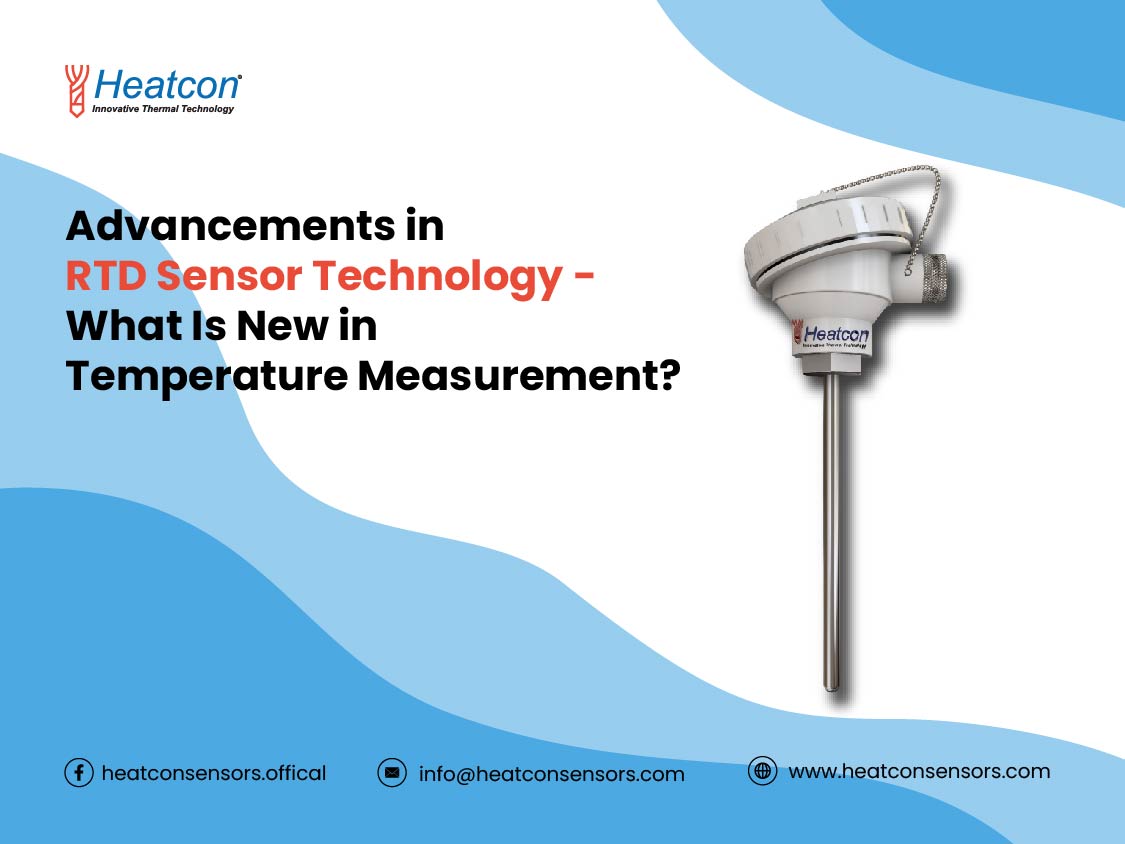Temperature measurements are critical across a myriad of industries. From the manufacturing industry to healthcare, accuracy & reliability in temperature measurements hold prime importance. Resistance-Temperature-Detectors (RTDs) have long been favoured for their precision & stability in measuring a range of temperatures.
Advancements in RTD Sensor Technology
Recent advancements in RTD sensor technology have literally pushed the boundaries of temperature measurement, thus giving enhanced accuracy, more durability, and high versatility.
Development of Thin-Film RTDs
One of the significant advancements in RTD sensor technology is the development of thin-film RTDs. Traditional RTD sensors often utilize wire-wound elements that are usually susceptible to mechanical stress & vibrations, leading to inaccuracy in temperature measurements. On the other hand, these thin-film RTD sensors are constructed in such a way that they make use of a thin layer of platinum deposited onto a substrate, which results in more robust & stable sensing. These RTDs provide improved response times and better resistance to shock & vibration, thus making them ideal for challenging industrial applications.
Integration of RTDs with Wireless Communication Capabilities
Another notable innovation is the integration of RTDs with wireless communication capabilities. By incorporating wireless technology like Bluetooth or Wi-Fi, these sensors can now transmit temperature data in real time to remote monitoring systems. This not only helps in streamlining the data collection process but even allows for continuous monitoring of temperature-sensitive processes without the requirement of any manual intervention. Additionally, you can deploy wireless RTDs easily in hard-to-reach/hazardous environments. This provides better flexibility and more convenience.
Operate in Extreme Conditions
Advancements in material science have also resulted in the development of RTDs capable of operating in extreme conditions. By using specialized materials & coatings, like ceramic /fluoropolymer, these sensors can withstand even very high temperatures, corrosive chemicals, and quite harsh environmental conditions. These rugged RTD sensors are much needed for applications in industries including automotive, aerospace, and oil & gas, etc, where temperature fluctuations & exposure to contaminants are a common affair.
Improved Accuracy and High Stability
Furthermore, advancements in signal processing technology have led to the development of these RTDs with improved accuracy & high stability. Advanced signal conditioning algorithms tend to compensate for external factors like lead resistance & self-heating, thus ensuring precise temperature measurements even in challenging environmental conditions. Moreover, the integration of digital signal processing capabilities also allows for enhanced diagnostics & self-calibration, which reduces any requirement for manual recalibration & maintenance.
Conclusively, we can say that advancements in RTD sensor technology have literally revolutionized temperature measurements, thus providing unprecedented levels of accuracy, reliability, and versatility. From thin-film RTD designs to wireless connectivity & rugged constructions, these technological innovations have in a way expanded the capabilities of these sensors, making RTDs indispensable across a wide range of industries. Moreover, as technology continues to evolve, we can surely expect further enhancements in RTD sensor technology, paving the way for even more precise & more efficient temperature measurement solutions. You can come to Heatcon Sensors to procure high-quality products.


